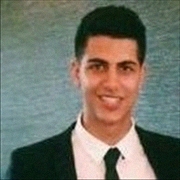Tutor HuntResources Engineering Resources
Aircraft Drone Uos347 Intellectual Property
A small Section from a management report outlining possible areas of intellectual property on the aircraft we designed and built
Date : 13/07/2015
Author Information

Uploaded by : Alex
Uploaded on : 13/07/2015
Subject : Engineering
On completion of the task the product has been examined thoroughly, and any areas of the
project that have the possibility of becoming intellectual property have been outlined below:
Wing Base: Once the wing had been constructed it was attached to the fuselage provided and a problem was spotted; the shape of the aerofoil meant that the area of the wing in contact with the fuselage was very small as seen in figure 3, this meant it was not structurally sound. In order to assemble the wings appropriately to the fuselage a 3D printed base that would enable a perfect fit for the aerofoil was manufactured. The 3D printer could not print the whole base as one piece so the base was cut with a T shape in the middle that would allow the pieces to slide in place like a puzzle. It was very important to get rid of as much material as possible without compromising the shape of the aerofoil to reduce material costs and manufacturing time; this was achieved by hollowing out the base as shown in figure 4.The group felt that the use of this base will give a clear advantage over other teams and therefore can be marked as intellectual property in either of the two following categories:
?Trade Secrets. Trade secrets can be identified as any design that is not generally known and gives an economic advantage over other businesses (Westby, 2004). There is no economic advantage as this was a project but in the working world the design of a base that adds such a structural advantage could easily add value to the aircraft.
? Patents. Patents are defined as "a set of exclusive rights granted to an inventor for a limited period of time in exchange for detailed public disclosure of an invention" (Correa, 2010). An invention is a product that solves a specific technological issue. There are grounds to say that because the base is a solution to a very unique problem that it is patentable; although it would be extremely difficult to patent without a product like this without an exact characteristic that is not already used in industry.
Arduino Code:
The code for the flight computer contained sections of real ingenuity and whilst it is difficult to protect software, it can certainly be done. Patents and copyrights can be used to protect software; the following is a brief overview of the areas of the autopilot code that can be related to
intellectual property:
? A complex filter was designed to reduce the noise in the measurements taken from the accelerometer and the gyroscope. This allowed for a more accurate measurement and lowered sensitivity to inertial forces measured by the accelerometer; it also eliminates the drift problem that results from using the gyroscope by itself. Software patent law states that patents may be applicable for areas of code that cannot be copyrighted which include algorithms, methods and functions; this filter falls into all three of these categories and therefore could be seen as patentable.
? The autopilots success would not have been possible without Rodrigo's PID controller which controlled the pitch and roll of the aircraft. This algorithm not only fixed the current errors between desired roll and pitch; it also takes into consideration past and future errors. This algorithm is not an entirely new idea so it cannot be patented although by copyrighting this section it will stop others from copying the way the code was expressed.
Paper-Mache Final Layer:
As previously noted in section 1, the foam the wing was extruded from had a very rough surface and this leads to turbulent flow over the surface. The foam was also easily marked or dented; Edward suggested that the wing should be coated with layers of paper-mache and painted to protect the surface while at the same time creating a smooth layer so that the flow around the wing was laminar. The team felt that this gave a distinct advantage over other aircrafts as it allows the wing to be produced to a high standard at a fraction of the costs of the other groups. This shows clear financial advantage as the expenditure is lowered without compromising on quality and thus it has merit to be considered as a trade secret.
This resource was uploaded by: Alex
